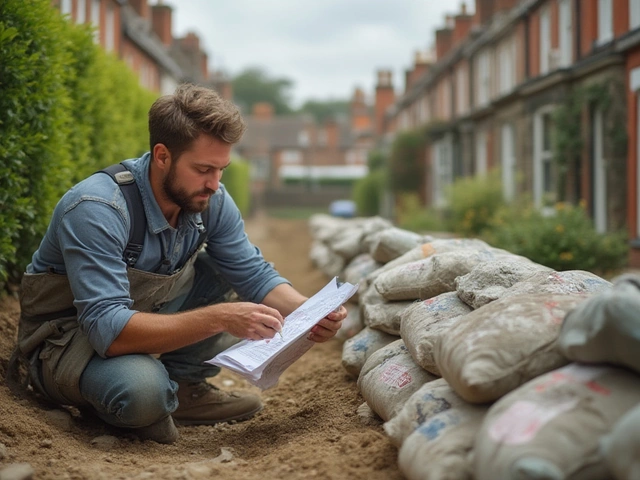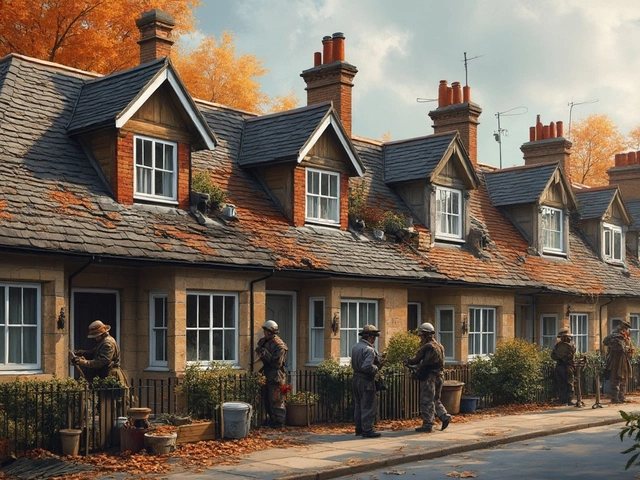Ever thought about the chaos that comes with renovating a house? It's kind of like doing a puzzle with missing pieces. Getting the order right is your best move, saving you time, stress, and, yes, a good chunk of cash.
So, where do you start? Begin with good old planning and budgeting. This sounds boring but trust me, it's your safety net. Before you lift a hammer, know what you want and what it might cost. Think about those unexpected hiccups—always good to leave a little wiggle room for surprises.
Planning and Budgeting
Okay, let's talk about the first step to a smooth home renovation: planning and budgeting. Think of this as drawing your roadmap before the journey. You wouldn't drive to a new city without GPS, right? Same idea here.
First up, make a list of what you want to change. Are you looking to knock down walls for that open-concept vibe, or maybe just update the kitchen? Get your ideas clear and list them out. This helps you stay focused and avoid adding in projects later that might blow your budget.
Speaking of budgets, this is your next move. Set a realistic budget—one that covers what you want but also leaves room for surprises (and trust me, there will be surprises). A good rule of thumb is to add an extra 10-20% as a buffer. Better to be safe than sorry, right?
To get a ballpark on costs, look up average prices for materials and labor in your area. You might find something like this useful:
| Project | Average Cost |
|---|---|
| Kitchen Remodel | £10,000 - £25,000 |
| Bathroom Upgrade | £5,000 - £15,000 |
Another key tip: prioritize! You might be dreaming of new hardwood floors, but if your roof is leaking, that's got to come first. Make a list of 'must-haves' versus 'nice-to-haves' to keep your spending in check.
- Make a comprehensive list of desired changes.
- Set a flexible, realistic budget with a buffer.
- Research average material and labor costs.
- Prioritize essential projects over cosmetic ones.
And finally, get a timeline down. Figure out when you want the work done and if there are any seasonal considerations (painting in January isn't fun). Having a rough schedule helps manage expectations and keeps everyone on the same page.
Getting your home renovation plan and budget sorted out upfront is like laying a solid foundation—critical for making sure the rest of the process runs as smoothly as possible.
Structural and Big Changes
Alright, you've got your plan and budget lined up. Now, it's time to tackle the big guns: structural changes. This step is crucial because it sets the backbone for everything else. Think of it as a foundation—literally and figuratively.
Starting with walls and floors, structural changes include altering load-bearing walls, adding or removing rooms, or fixing foundation issues. These need to be done first because they affect the house's stability and should be handled when the site's clear of completed upgrades that can get damaged.
Maybe you’re thinking about opening up your kitchen into the living room. This open-concept design is trending and can add space and light. Just make sure to check with a structural engineer before you start swinging a sledgehammer.
If you're adding new spaces or floors, now's the time. Some old houses have hidden features like chimneys or unused stairwells that can be a surprise. Getting professionals for this stage is non-negotiable. They ensure safety and compliance with local regulations, which varies quite a bit even within the UK. Did you know that in some regions if you're planning significant structural changes, a 'Party Wall Agreement' might be needed if you share walls with a neighbor?
Here’s a nifty tip: if you have the opportunity to improve insulation, do it when walls are open. It might not sound exciting, but it’s a game-changer for reducing those heating bills.
Upgrading windows or roofing could follow the initial structural fixes. It not only boosts the house’s look but also keeps it weather-tight. Getting energy-efficient windows can qualify you for certain rebates, so definitely worth checking.
- Check load-bearing walls before making changes.
- Consider structural engineer consultations for major alterations.
- Factor in possible hidden features that could impact your plan.
- Upgrade insulation when walls are exposed.
Structural changes sit in the spotlight here for good reason—they make the house work better for you. Messing up this step can lead to bigger headaches down the road. So, get it right the first time!

Plumbing and Electrical
Alright, now comes the crucial stage of plumbing and electrical work. Think of this as the house’s nerve and circulatory systems. You can’t see most of it, but if it goes wrong, your cozy nest might become a nightmare. So it’s really worth paying extra attention here.
Before you get started, bring in the pros. Yes, those guys who kind of look like they live in tool belts. They’ve seen it all and know how to prevent a small leak from turning into a total flood. Trust me, DIY might sound fun, but it’s not when the water’s ankle-deep.
First, tackle the plumbing. Replace old pipes with newer materials like PEX or copper. They're more durable and less prone to leaks. Also, if you're planning to add any bathrooms or change the kitchen layout, this is the time to reroute pipes and drains.
Now, onto electrical. This part is about safety—yours and your home’s. Stage your outlets where you actually need them, like where your phone charger is always just a little too far away. If you're in an older house, consider adding more circuits to handle modern tech.
- Update the electrical panel, if necessary. An old panel could struggle with newer appliances.
- Install GFCI outlets in places with water like kitchens and bathrooms. They reduce the risk of electrical shocks.
- Consider integrating smart home features. It's like giving your house a brain, and can save energy and money.
The order here matters, folks. You don’t want to finish installing your dream shower and, oops, realize there’s no water pressure. So, get these house improvements nailed down before moving on to the fun stuff like choosing paint colors or making the fireplace cozy.
Finishing Touches
Once the heavy lifting is done, it's time to add those finishing touches that make a house feel like a home. This is where you can get creative and really make the space your own.
Start with painting. It's one of the quickest ways to transform the vibe of a room. Go for colors that reflect your style. Want a room to feel bigger? Lighter colors tend to do the trick. If you're feeling bold, a feature wall with a pop of color can add a lot of personality.
Next, tackle flooring. Whether you're into hardwood, carpet, or tiles, the choice can impact the look and feel of the entire space. Keep in mind the level of foot traffic each area will get. Got kids or pets running around? Maybe something more durable is the way to go.
Also, consider adding fixtures like light fittings, doorknobs, and cabinet handles. These small details create a cohesive look. Plus, swapping out older fixtures can make even an older home feel fresh.
Don't forget about the decor. It's like setting the stage for your life. Hang artwork, set up your furniture, and throw in some cozy textiles like cushions and rugs to soften up the space.
Here's a handy checklist to wrap things up:
- Paint and finish walls
- Install flooring
- Replace or polish fixtures
- Arrange furniture
- Hang artwork and mirrors
- Add textiles like curtains and throw pillows
Finally, pay attention to lighting. Well-placed lighting can highlight focal points of your home renovation. Consider layered lighting—including ambient, task, and accent lighting—to create a warm, inviting atmosphere.
Remember, the finishing touches are all about making the place feel like your own cozy haven. Enjoy it, because this is where all your hard work really starts to pay off.





